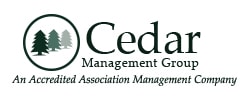Robert’s Rules of Order committees aid an organization’s leaders and members ensure efficient and smooth operations. These committees serve as essential support systems, though not everyone knows how they function or what types they are.
Robert’s Rules of Order Committees: What Are They?
While a Board of Directors leads most organizations, committees play an equally important role. Committees help facilitate the operations of the organization, assisting the board in various responsibilities.
A committee only functions within the scope defined by the organization and can’t act independently, though. If the committee comes up with an idea for the group’s benefit, it can propose it as a motion to the assembly.
The bylaws should specify who has the authority to appoint committee members. This person also appoints the chairman and fills any vacancies.
The Role of the Secretary
The secretary has three main functions concerning Robert’s Rules committees. These are:
- Informing members of their committee appointment;
- Providing necessary documents to the chairman; and,
- If a motion is referred to the committee, supplies the chairman with the motion and related instructions.
The committee chairman must preserve and return all documents they receive. Standing committees should maintain a record of activities, creating a file handed over to the new chairman annually. This file serves as a continuous record of the committee’s activities.
Two Types of Committees in Robert’s Rules
Most organizations share two types of committees: standing committees and special committees.
1. Standing Committees
Standing committees, outlined in the bylaws, are a lasting element of the organization. Although members may change with new officers, the committee’s purpose and responsibilities remain constant.
These committees play a crucial role in the organization’s smooth functioning. When the board or members receive business related to a standing committee’s work, it is typically delegated to that committee. The committee investigates and presents its findings to the board or membership.
Within homeowners associations, common examples of standing committees include:
- Architectural Control Committees
- Violations Committees
- Finance or Budget Committees
- Social Committees
2. Special Committees
The special committee, also known as the select or Robert’s Rules ad hoc committee, is formed only for a specific task. This type of committee disbands after completing the task and presenting the final report. It’s important not to create a special committee for something a standing committee can already cover.
Special committees have two roles: investigation and implementation. For instance, if the organization considers transforming tennis courts into pickleball courts, a member can propose a committee to research this. Alternatively, a committee can be formed to carry out the renovation if a motion to convert the courts passes.
The committee’s purpose will dictate its size and composition. When investigating, the committee should seek input from the membership early on and discuss it at committee meetings instead of assembly meetings. This helps save time.
If a committee implements a decision, it should comprise only those in favor to avoid delays or non-compliance. Committees for investigation are typically oversized to represent various viewpoints, while implementation committees are usually small for efficient work.
What Does the Committee Chairman Do?
The committee chairman plays a crucial role, overseeing meetings, managing work, and ensuring everyone completes their tasks on time. The president or board usually appoints the committee chairman. However, the committee chairman may also assume their position through an election from the assembly.
When choosing a chairman, applicants should look for someone passionate about the work who has sufficient time and skills. The chairman should collaborate well and motivate team members. Other committee members should be selected based on their contributions and ability to cooperate, emphasizing teamwork over individual efforts.
Presenting Committee Reports
Reports from committees are presented in the order specified in the rules upon the chair’s request. The chair initiates the process by calling for reports from officers and standing committees, followed by special committees in their appointed order. The reporting member, typically the committee chairman, rises when called upon, reads the report, and hands it to the presiding officer. If the order of business doesn’t address committee reports, the reporting member takes the floor when no other business is pending.
Complementary to the Board
The effective functioning of Robert’s Rules of Order committees significantly contributes to an organization’s overall efficiency and coherence. Standing and special committees act as prominent pieces of the puzzle, helping board directors fulfill their roles efficiently.






